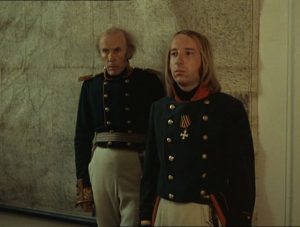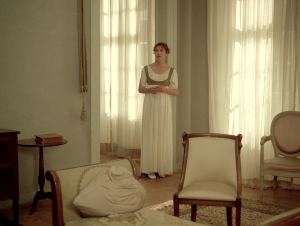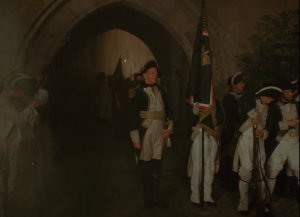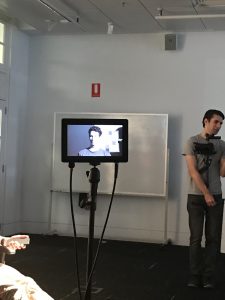There was a wonderful period in my life 3 years ago where I had access to all of the Criterion films through a streaming service (sadly, this service no longer exists). It was here that I was first exposed to Truffaut, Rohmer, and in the spirit of selecting random European directors, Bergman. I watched two of his films – Wild Strawberries (I was drunk on whiskey at 1AM, it was spectacular), and a week or so later, Dreams, one of his lesser known works. Looking back, I have no idea why I didn’t watch more of his work. His sensibility greatly resonated with me. You could also see his influence in Woody Allen’s films, most notably Interiors which along with Husbands and Wives are, in my opinion, his best films.
The above thoughts occurred during and after the Sven Nyqvist reading, which, ultimately, I found to be totally fascinating. Nyqvist didn’t shoot either of the Bergman films I have seen, but this reading was a reminder to see how they collaborated with one another.
What I most admire about Nyqvist and Bergman is that they totally lack the pretension or the over-intellectualism that (some) filmmakers and theorists like to indulge in. Their love for cinema comes from a pure, emotional state.
“My parents were missionaries in the Congo and one of my very early memories is of looking at images from Africa captured on a wind-up film camera. They showed African men building a church with my father, and the captivated me. Later, when my parents returned to Africa, I was sent to live with my aunt and she gave me my first stills camera. Apart from photography, I also loved sport as a boy. When I was 16, I worked as a newspaper delivery boy in order to earn the money to buy a Keystone 8mm camera, which I could use to film the athletes in slow motion during a competition in order to understand a new high-jump technique being used by American athletes to improve their scores. That experience got me interested in shooting film, but my parents didn’t want me to go into the cinema because, to them, it was sinful.”
A year ago I bought a book about Ingmar Bergman’s Wild Strawberries, which is essentially the script and photography. It begins with a chapter ‘Bergman discusses film-making’ where he, like Nyqvist, details his initial cinematic discoveries.
“My association with film goes back to the world of childhood. My grandmother had a very large old apartment in Uppsala. I used to sit under the dining room table there, “listening” to the sunshine that came in through the gigantic window. The bells of the cathedral went ding dong, and the sunlight moved about and “sounded” in a special way. One day, when winter was giving way to spring and I was 5 years old, a piano was being played in the next apartment. It played waltzes, nothing but waltzes. On the wall hung a large picture of Venice. As the sunlight moved across the picture, the water in the canal began to flow, the pigeons flew up from the square, gesticulating people were engaged in inaudible conversation. Bells sounded, not from Uppsala Cathedral, but from the picture itself. And the piano music also came from that remarkable picture of Venice.”
I can see why they worked together…








